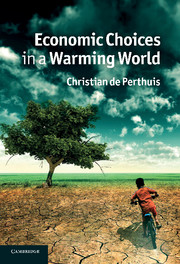Book contents
- Frontmatter
- Contents
- Acknowledgements
- Introduction
- 1 Climate risk
- 2 Some like it hot: adaptation to climate change
- 3 Building a low-carbon energy future
- 4 Pricing carbon: the economics of cap-and-trade
- 5 Intensifying agriculture to safeguard forests
- 6 The price of carbon: the economics of projects
- 7 Macroeconomic impacts: sharing carbon rent
- 8 International climate negotiations
- Conclusion
- References
- Appendix 1 Thirty key readings
- Appendix 2 Thirty key sets of figures
- Appendix 3 Greenhouse gas emissions around the world
- Glossary
- Index
3 - Building a low-carbon energy future
Published online by Cambridge University Press: 05 June 2012
- Frontmatter
- Contents
- Acknowledgements
- Introduction
- 1 Climate risk
- 2 Some like it hot: adaptation to climate change
- 3 Building a low-carbon energy future
- 4 Pricing carbon: the economics of cap-and-trade
- 5 Intensifying agriculture to safeguard forests
- 6 The price of carbon: the economics of projects
- 7 Macroeconomic impacts: sharing carbon rent
- 8 International climate negotiations
- Conclusion
- References
- Appendix 1 Thirty key readings
- Appendix 2 Thirty key sets of figures
- Appendix 3 Greenhouse gas emissions around the world
- Glossary
- Index
Summary
Liliana lives in the new housing development of Burlington Park in the San Gabriel Valley, eighteen miles east of Los Angeles. Her parents were attracted by the size of the houses and the large gardens. But like many of their fellow residents, they have found out what this way of life entails in their electricity bills and expenditure on petrol. The family budget is squeezed even tighter because of their monthly mortgage repayments on the house.
Liliana's family does not include its greenhouse gas emissions in the household budget. Each year it emits 6 tonnes of carbon dioxide (CO2) per person from its two cars and 8 tonnes from its electricity consumption. In total the family's carbon budget comes to 20 tonnes of CO2 for each member of the family. This is the average per person in the US. If all the planet's inhabitants lived like Liliana, world greenhouse gas emissions would be instantly three times as much.
Marjohan is fourteen, the same age as Liliana. He lives in the south-east of the island of Borneo. Like his two brothers, he helps his father grow rice. The family owns 2 hectares situated right below the village. Water is abundant here. They flood their fields in the time-honoured way. The use of fertilizer has revolutionized rice farming and they can now get two crops a year. The needs of the family are largely met, and the village grocer, a relative, sells the surplus.
- Type
- Chapter
- Information
- Economic Choices in a Warming World , pp. 57 - 87Publisher: Cambridge University PressPrint publication year: 2011



